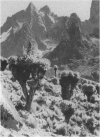Abstract
Chloroplast DNA restriction-site variation was surveyed among 40 accessions representing all 11 species of giant senecios (Dendrosenecio, Asteraceae) at all but one known location, plus three outgroup species. Remarkably little variation (only 9 variable sites out of roughly 1000 sites examined) was found among the 40 giant senecio accessions, yet as a group they differ significantly (at 18 sites) from Cineraria deltoidea, the closest known relative. This pattern indicates that the giant senecios underwent a recent dramatic radiation in eastern Africa and evolved from a relatively isolated lineage within the Senecioneae. Biogeographic interpretation of the molecular phylogeny suggests that the giant senecios originated high on Mt. Kilimanjaro, with subsequent dispersion to the Aberdares, Mt. Kenya, and the Cherangani Hills, followed by dispersion westward to the Ruwenzori Mountains, and then south to the Virunga Mountains, Mt. Kahuzi, and Mt. Muhi, but with dispersion back to Mt. Elgon. Geographic radiation was an important antecedent to the diversification in eastern Africa, which primarily involved repeated altitudinal radiation, both up and down the mountains, leading to morphological parallelism in both directions. In general, the plants on a given mountain are more closely related to each other than they are to plants on other mountains, and plants on nearby mountains are more closely related to each other than they are to plants on more distant mountains. The individual steps of the geographic radiation have occurred at various altitudes, some clearly the result of intermountain dispersal. The molecular evidence suggests that two species are extant ancestors to other species on the same or nearby mountains.
Full text
PDF
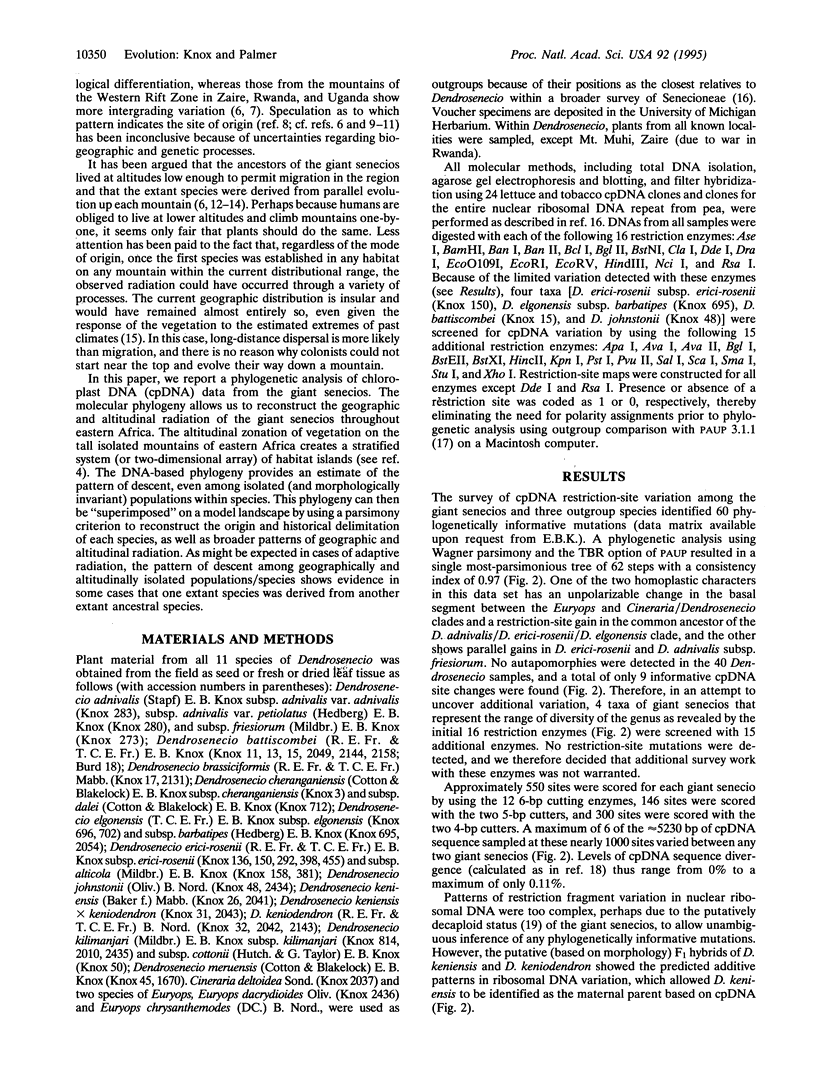
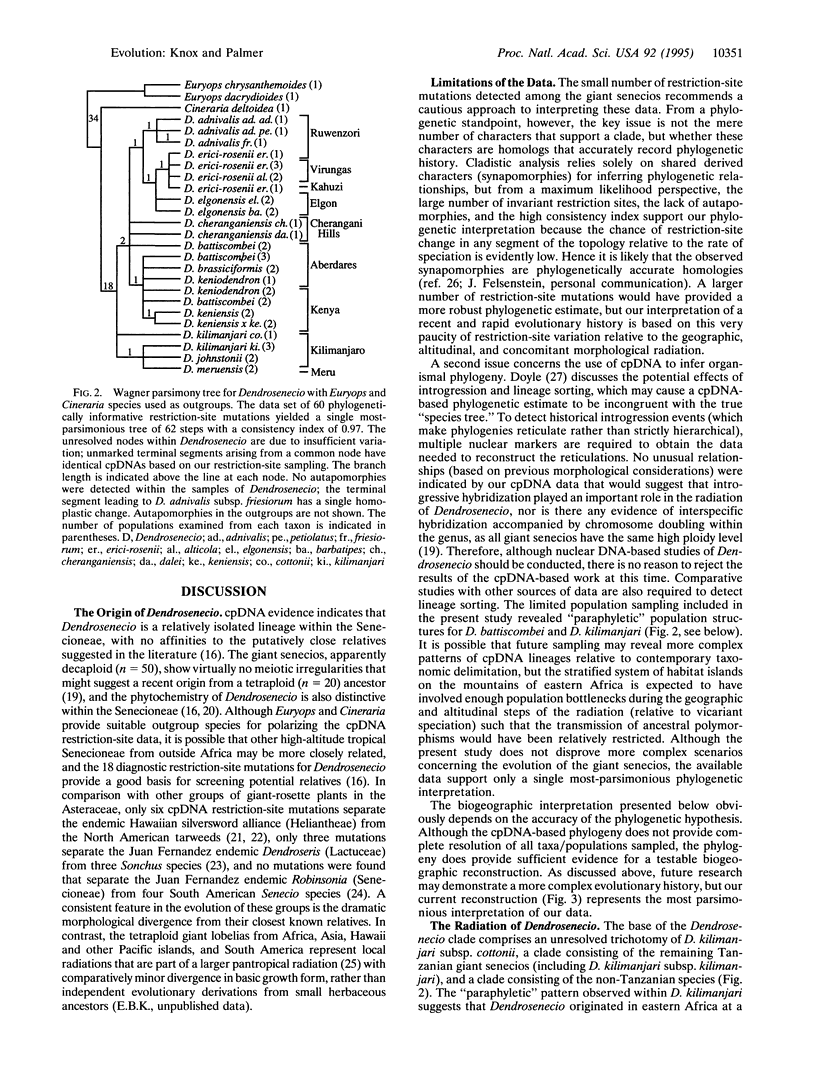
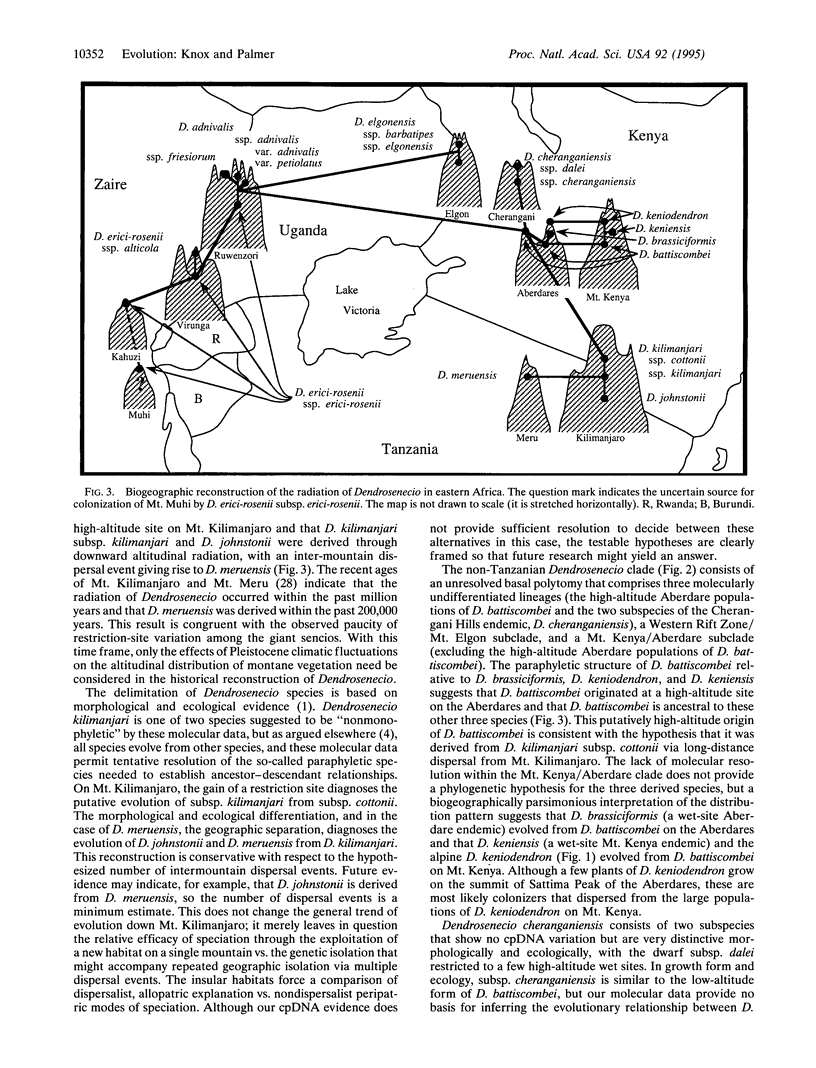
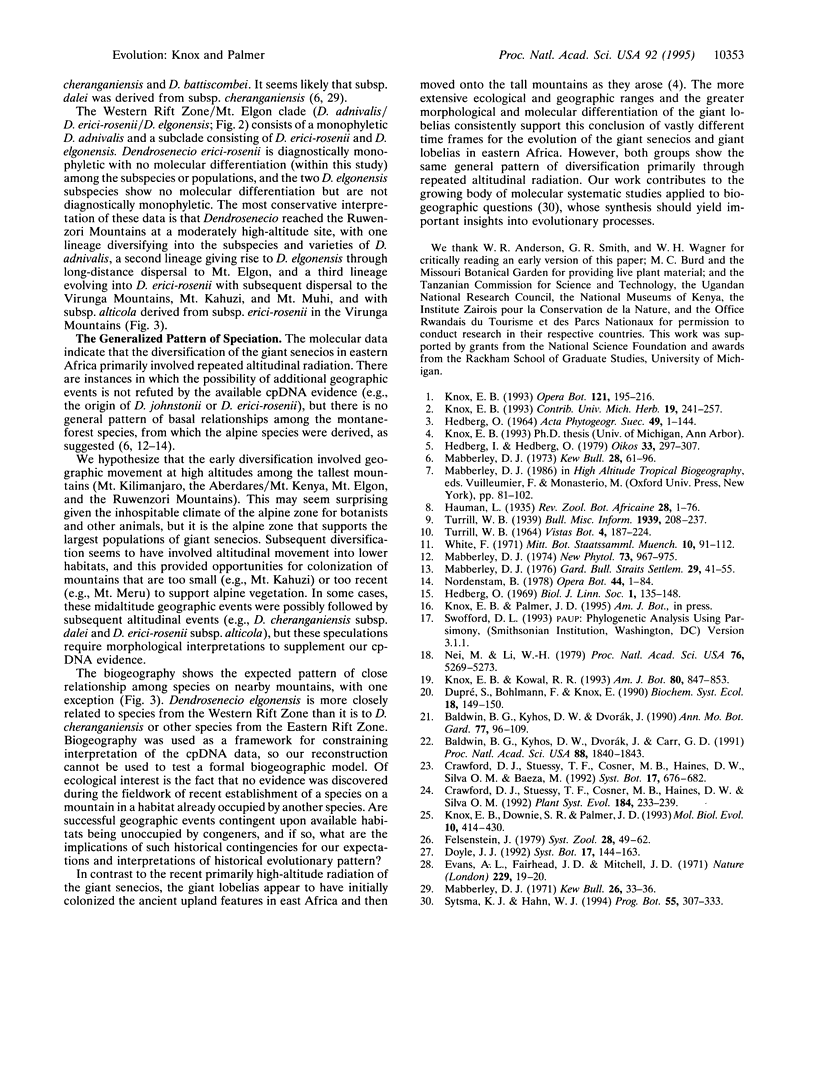
Images in this article
Selected References
These references are in PubMed. This may not be the complete list of references from this article.
- Baldwin B. G., Kyhos D. W., Dvorak J., Carr G. D. Chloroplast DNA evidence for a North American origin of the Hawaiian silversword alliance (Asteraceae). Proc Natl Acad Sci U S A. 1991 Mar 1;88(5):1840–1843. doi: 10.1073/pnas.88.5.1840. [DOI] [PMC free article] [PubMed] [Google Scholar]
- Nei M., Li W. H. Mathematical model for studying genetic variation in terms of restriction endonucleases. Proc Natl Acad Sci U S A. 1979 Oct;76(10):5269–5273. doi: 10.1073/pnas.76.10.5269. [DOI] [PMC free article] [PubMed] [Google Scholar]



